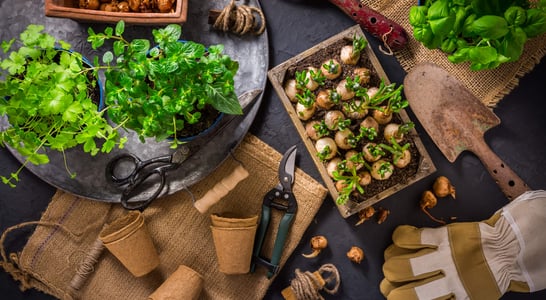
Cambodian New Year
Cambodian New Year, also known as Khmer New Year or Chol Chnam Thmay, is a lively and colorful celebration marking the end of the harvest season and the start of a new year.
It’s a time for family gatherings, religious ceremonies, and community festivities.
The holiday is crucial for Cambodian people as it signifies a period of renewal, hope, and prosperity. It’s celebrated with traditional rituals, vibrant decorations, and joyful activities that fill the streets and homes with festive energy.
What Does the Cambodian New Year Represent?
The primary reason for celebrating the Cambodian New Year is to honor the end of the agricultural cycle and to welcome the rainy season, which is essential for rice farming.
This period offers farmers a much-needed break after the intense harvest months.
Additionally, the festival aligns with the Theravada Buddhist calendar, reflecting the spiritual significance of starting anew. People participate in various customs, such as visiting pagodas to offer food and flowers, engaging in water blessings, and seeking blessings from elders.
Cambodian New Year also emphasizes community and family. It’s a time for people to reconnect with loved ones, clean their homes to sweep away bad luck, and prepare traditional dishes. These practices symbolize purification and fresh beginnings.
History of Cambodian New Year
Cambodian New Year, known as Khmer New Year or Chol Chnam Thmay, began during the ancient Khmer Empire.
The celebration originally took place in November or December, aligning with the lunar calendar. In the 13th century, a Khmer king shifted the date to April, which coincides with the end of the harvest season and the start of the rainy season.
This change allowed farmers to celebrate after their busiest period, ensuring they had time to rest and enjoy the festivities.
The festival is deeply rooted in Cambodia’s agricultural society and Buddhist beliefs. It marks a time for Cambodians to pay respects to their ancestors, seek blessings, and start anew. The celebration spans three days, each with its significance.
On the first day, Moha Songkran welcomes a new angel for the year. On the second day, Virak Vanabat, people perform acts of charity and honor their ancestors.
The third day, Leung Sakk, involves washing Buddha statues and elders with holy water, symbolizing purification and renewal.
How to Celebrate Cambodian New Year
Khmer New Year is a vibrant blend of religious rituals and joyous activities. Traditional games, music, dance, and delicious food play a significant role.
Families prepare special dishes, visit pagodas, and engage in community events.
These traditions strengthen familial bonds and cultural identity, making the New Year a cherished and meaningful time for Cambodians everywhere.
The festival celebrates the new year but also strengthens cultural bonds and familial ties, making it a cherished time for all Cambodians.
Decorate with Flair
Deck the halls with vibrant colors! Cambodian New Year calls for red, blue, yellow, and green decorations. Paper lanterns, streamers, and fresh flowers brighten up any space.
Jasmine and frangipani add a lovely fragrance to the festivities. This burst of color and scent sets a festive tone, making every corner of your home feel like a celebration.
Indulge in Traditional Treats
Prepare a feast of traditional Khmer dishes. Sticky rice wrapped in banana leaves, fish amok, and fresh spring rolls are must-haves.
Remember the sweet treats like rice porridge with coconut milk. Sharing these dishes with friends and family adds a delicious touch to the celebration. It’s a culinary journey that brings everyone together.
Play Traditional Games
Gather everyone for some fun games. Try your hand at “Chol Chhoung,” a traditional tossing game, or “Leak Kanseng,” where you hide a scarf and sing songs.
These playful activities are perfect for all ages and keep the spirit of the New Year alive. Plus, it’s a great way to bond with loved ones and create lasting memories.
Visit a Pagoda
Take a trip to a local pagoda to offer food, flowers, and incense. Participating in these religious ceremonies brings peace and blessings for the coming year.
It’s a serene break from the hustle and bustle, providing a moment of reflection and gratitude. Everyone leaves with a sense of fulfillment and spiritual renewal.
Clean and Prepare
Before the festivities begin, give your home a thorough cleaning. This practice symbolizes getting rid of the old and welcoming the new.
Decorate with fresh flowers and traditional items to invite good fortune. A clean and beautifully adorned home sets the perfect stage for all the New Year’s activities. It’s a refreshing start to the year.
Also on ...
View all holidaysNational Gardening Day
Gardening is a magical escape to a world of color, scents and textures. Planting a seed and watching it grow is a reminder of life's wonders.
National Anime Day
Attend a convention, connect with fellow fans, or simply enjoy your favorite anime to honor the ever-popular form of media that first originated in Japan.
National Librarian Day
These knowledgeable folks are book lovers and experts in finding information. They love helping patrons and keeping the library organized.
National Look Up at the Sky Day
Slow down, take a deep breath, and take a moment to look up at the sky and appreciate the small beauties in an otherwise hectic, fast-paced, sometimes ugly life.
We think you may also like...
Easter Monday
Easter Monday is the perfect time to relax and spend quality time with family and friends. Enjoy a leisurely brunch, hunt for hidden Easter eggs, or take a leisurely stroll in the sunshine.








